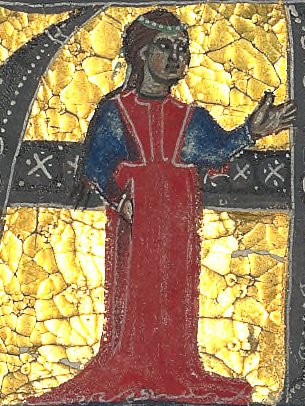Castelloza on:
[Wikipedia]
[Google]
[Amazon]
 Na Castelloza (fl. early 13th century) was a noblewoman and
Na Castelloza (fl. early 13th century) was a noblewoman and
 According to her later ''
According to her later ''
"Fictions of the Female Voice: The Women Troubadours."
'' Speculum'', Vol. 67, No. 4. (Oct., 1992), pp. 865–891. *Coldwell, Maria V. "Castelloza."
Grove Music Online
', ed. L. Macy. *''The Vidas of the Troubadours'', ed. and trans. Margarita Egan. New York: Garland, 1984. .
"Where Were the Provençal 'Vidas' and 'Razos' Written?"
''Modern Philology'', Vol. 35, No. 3. (Feb., 1938), pp. 225–232. *Shapiro, Marianne
"The Provençal Trobairitz and the Limits of Courtly Love."
''Signs'', Vol. 3, No. 3. (Spring, 1978), pp. 560–571. *Weiss, Julian. "Lyric Sequences in the ''Cantigas d'amigo''." ''Bulletin of Hispanic Studies'', 65:1 (1988:Jan.), pp. 21–38. *Bec, Pierre. « L’Amour au Féminin: Les Femmes-Troubadours et Leurs Chansons » (2013, fédérop). {{Authority control 13th-century French women writers 13th-century French troubadours 13th-century women composers Medieval French nobility Trobairitz French women poets People from Auvergne
 Na Castelloza (fl. early 13th century) was a noblewoman and
Na Castelloza (fl. early 13th century) was a noblewoman and trobairitz
The ''trobairitz'' () were Occitan female troubadours of the 12th and 13th centuries, active from around 1170 to approximately 1260. ''Trobairitz'' is both singular and plural.
The word ''trobairitz'' is first attested in the 13th-century roma ...
from Auvergne
Auvergne (; ; oc, label=Occitan, Auvèrnhe or ) is a former administrative region in central France, comprising the four departments of Allier, Puy-de-Dôme, Cantal and Haute-Loire. Since 1 January 2016, it has been part of the new region Auverg ...
.
Life
 According to her later ''
According to her later ''vida
Vida means “life” in Spanish and Portuguese. It may refer to:
Geography
* Vida (Gradačac), village in Bosnia and Herzegovina
* Lake Vida, Victoria Valley, Antarctica
* U.S. settled places:
** Vida, Montana
** Vida, Oregon
** Vida, Missour ...
'', Castelloza was the wife of Turc de Mairona, probably the lord of Meyronne
Meyronne (; oc, Mairona) is a commune in the Lot department in south-western France.
See also
*Communes of the Lot department
The following is a list of the 313 communes of the Lot department of France
France (), officially ...
.''Vidas'', p. 26. Turc's ancestors had participated in a Crusade
The Crusades were a series of religious wars initiated, supported, and sometimes directed by the Latin Church in the medieval period. The best known of these Crusades are those to the Holy Land in the period between 1095 and 1291 that were i ...
around 1210 or 1220, which was the origin of his name (meaning " Turk"). She was reputed to have been in love with Arman de Brion, a member of the house of Bréon and of greater social rank than her, about whom she wrote several songs. Her ''vida'' records her to have been "very gay", "very learned", and "very beautiful". Only three—perhaps four if recent scholarship is accepted—of her songs (all ''cansos
The ''canso'' or ''canson'' or ''canzo'' () was a song style used by the troubadours. It was, by far, the most common genre used, especially by early troubadours, and only in the second half of the 13th century was its dominance challenged by a ...
'') survive, all without music. This, however, makes her at least the second most prolific of trobairitz in terms of surviving works: only Beatriz de Dia
The Comtessa de Dia (Countess of Die), possibly named Beatritz or Isoarda (fl. c. 1175 or c. 1212), was a trobairitz (female troubadour).
She is only known as the ''comtessa de Dia'' in contemporary documents, but was most likely the daughter o ...
certainly has more, with four ''cansos'' to her name. The subject of all her poems is courtly love
Courtly love ( oc, fin'amor ; french: amour courtois ) was a medieval European literary conception of love that emphasized nobility and chivalry. Medieval literature is filled with examples of knights setting out on adventures and performing vari ...
.
Compared with Beatriz de Dia, Castelloza is a more conservative poet. Her persona throughout her works is consistent and though she raises the tension between conditional and unconditional love she always remains committed to absolute fidelity.
One scholar, Peter Dronke
Ernst Peter Michael Dronke FBA (30 May 1934 – 19 April 2020) was a scholar specialising in Medieval Latin literature. He was one of the 20th century's leading scholars of medieval Latin lyric, and his book ''The Medieval Lyric'' (1968) is consi ...
, has seen Castelloza's songs as forming a lyric cycle.Bruckner, 884.
List of works
*' *' *' *' (disputed)References
Notes
Citations
Bibliography
*Bruckner, Matilda Tomaryn"Fictions of the Female Voice: The Women Troubadours."
'' Speculum'', Vol. 67, No. 4. (Oct., 1992), pp. 865–891. *Coldwell, Maria V. "Castelloza."
Grove Music Online
', ed. L. Macy. *''The Vidas of the Troubadours'', ed. and trans. Margarita Egan. New York: Garland, 1984. .
Further reading
*Gravdal, Kathryn. "Mimicry, Metonymy, and 'Women's Song': the Medieval Women Trobairitz." ''Romanic Review'', 83:4 (1992:Nov.) pp. 411–427. *Paden, William D., Jr. "The Poems of the 'Trobairitz' Na Castelloza." ''Romance Philology'', 35:1 (1981:Aug.), pp. 158–182. *Schutz, A. H"Where Were the Provençal 'Vidas' and 'Razos' Written?"
''Modern Philology'', Vol. 35, No. 3. (Feb., 1938), pp. 225–232. *Shapiro, Marianne
"The Provençal Trobairitz and the Limits of Courtly Love."
''Signs'', Vol. 3, No. 3. (Spring, 1978), pp. 560–571. *Weiss, Julian. "Lyric Sequences in the ''Cantigas d'amigo''." ''Bulletin of Hispanic Studies'', 65:1 (1988:Jan.), pp. 21–38. *Bec, Pierre. « L’Amour au Féminin: Les Femmes-Troubadours et Leurs Chansons » (2013, fédérop). {{Authority control 13th-century French women writers 13th-century French troubadours 13th-century women composers Medieval French nobility Trobairitz French women poets People from Auvergne